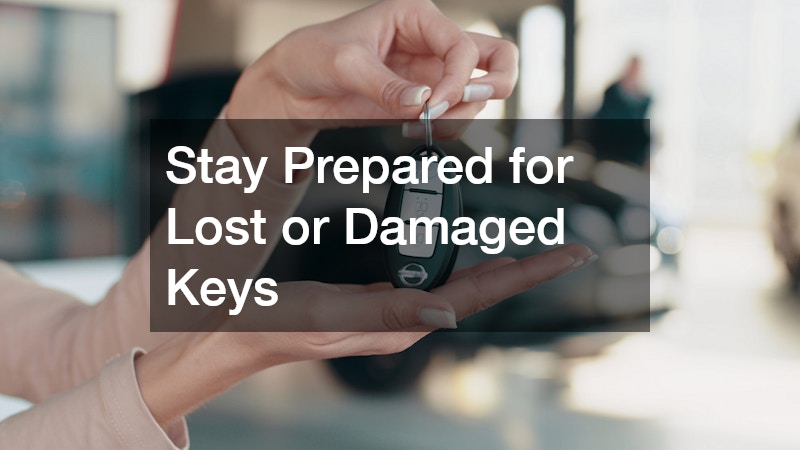Introduction
Consistent car care is crucial for every vehicle owner — it’s the difference between a smooth, reliable drive and frequent, costly repairs. Studies show that nearly 40% of car breakdowns could have been prevented with routine maintenance, yet many drivers skip essential services like oil changes or tire checks until a problem arises. Proper upkeep not only improves performance and fuel efficiency but also extends the lifespan of your vehicle by several years.
According to AAA, neglecting regular maintenance can increase long-term repair costs by up to 45%, especially when small issues escalate into major mechanical failures. Well-maintained cars also consume 10–15% less fuel, saving hundreds of dollars annually while reducing harmful emissions.
Routine car care goes beyond oil changes — it includes checking your brakes, keeping fluids topped up, cleaning interiors, and protecting your car from heat and UV damage. By combining DIY care (like washing and waxing) with professional services (such as detailing or transmission inspections), vehicle owners can maximize both safety and value.
In this guide, we’ll explore the top 10 car care essentials every vehicle owner should adopt to keep their car looking great, running smoothly, and lasting longer on the road.
1. Keep Your Vehicle Cool and Protected

Modern vehicles require protection from heat, glare, and UV exposure. Auto tinting is a popular method to keep vehicles cool and enhance privacy. The application of window films prevents fading and damage to the interior, safeguarding the upholstery and dashboard. Besides increasing comfort, auto tinting contributes to energy efficiency by reducing the need for excessive air conditioning use.
Choosing the Right Tint Type
Car owners should explore various tint types to find one that suits their needs. Consider aspects such as heat rejection, UV protection, and glare reduction. Each type of tint offers unique advantages, so understanding their specifications is essential for optimal car care. It’s important to choose a legal tint level in compliance with local laws to avoid fines or mandatory removal.
Professional Installation Tips
Hiring a professional for tint installation ensures that the job is done correctly and efficiently. Experienced technicians have the skills and tools to apply the tint seamlessly, minimizing bubbles and imperfections. A well-installed tint not only looks better but also functions more effectively to protect the car interior.
Maintenance and Legal Considerations
Maintaining tinted windows requires special care, such as avoiding ammonia-based cleaners that could damage the film. Regularly cleaning the windows with appropriate solutions ensures longevity and a clean appearance. It’s also crucial to stay informed about legal considerations related to tint darkness levels to avoid breaking the law.
2. Maintain That Showroom Shine
Regular auto detailing preserves your car’s aesthetics and overall value. Beyond mere appearance, consistent cleaning and waxing protect the paint from environmental damage. A clean vehicle is less susceptible to rust and corrosion, both of which compromise the structural integrity and outward condition of your car.
Key Benefits of Detailing
Auto detailing involves comprehensive cleaning methods that reach areas often overlooked in standard washes. This level of care restores the car’s original shine and luster. Detailing also focuses on maintaining interior cleanliness, promoting a healthier environment for passengers by reducing allergens and pollutants. Investing in detailing affirms a commitment to preserving your car’s long-term value.
DIY vs. Professional Options
While DIY detailing can be cost-effective and convenient, professional services promise expertise and meticulous attention to detail. Pros offer specialized equipment and products not commonly found at home, guaranteeing superior results. However, DIY methods empower owners with flexibility, allowing car care enthusiasts to share an intimate connection with their vehicles.
Frequency and Care Products
Regular detailing, ideally once every few months, prevents dirt buildup and long-term damage to your car’s finish. Quality car care products, such as microfiber cloths and pH-balanced cleaners, are critical to achieving optimal results. By staying consistent with detailing routines, owners ensure their vehicles remain an exemplar of both beauty and functionality.
3. Fix Issues Early to Prevent Costly Breakdowns
Proactive car repairs avert safety hazards and costly breakdowns. Regular inspections help identify potential issues with engines, brakes, belts, and fluids. Acting on these signs early reduces the risk of major malfunctions and keeps the vehicle safe and operational.
Signs You Need Immediate Repair
Strange noises, such as grinding or squealing, may indicate the need for immediate vehicle attention. Similarly, dashboard warning lights are designed to notify owners of possible issues that should not be ignored. These early warning signs emphasize the importance of prompt car repairs.
Importance of Preventive Maintenance
Routine maintenance checks offer a proactive approach to vehicle management, avoiding extensive damage down the line. This includes frequent oil changes, brake inspections, and fluid top-offs. Adopting preventive maintenance habits preserves car longevity and assures peak performance throughout its life.
Choosing a Trusted Mechanic
Finding a trusted mechanic is integral to ensuring quality car care. A skilled professional provides accurate diagnoses and fair pricing, safeguarding you against unnecessary repairs. Developing a good relationship with your mechanic fosters reliable care and tailored solutions for your vehicle’s needs.
4. Stay Prepared for Lost or Damaged Keys

Few experiences are as frustrating as losing your car keys. Timely car keys replacements mitigate the inconvenience and stress associated with lost or broken keys. Understanding the differences between smart keys and transponder keys aids in obtaining the right replacement efficiently.
Common Key Problems
Common car key issues range from lost or broken keys to malfunctioning electronic responses. Damaged key fobs often require reprogramming or battery replacements. Knowing these common problems prepares car owners to address issues swiftly when they arise.
Spare Key Management
A spare key is essential to prevent lockout situations. Securely store spare keys in accessible but safe locations to circumvent potential issues. Being proactive by duplicating keys in advance empowers owners with alternative solutions.
Cost and Security Tips
Investing in professional car key replacement services ensures both cost efficiency and enhanced security. An authorized locksmith provides trusted solutions, prioritizing customer safety and key integrity. Security tips include avoiding third-party services that might compromise robust vehicle locks.
Get Value from Old or Damaged Vehicles
Auto salvage services offer solutions for owners of irreparable or extensively damaged cars. Salvage yards safely and legally recycle vehicles, allowing users to recover some of their car’s value. This process entails thorough assessment, paperwork management, and eco-friendly disposal benefits.
Assessing Salvage Value
Salvage yards assess vehicles based on components and weight, establishing a fair market value. Factors like part demand and metal prices influence overall valuation. Understanding your vehicle’s current condition guides expectations during the appraisal process.
Recycling and Reuse Benefits
Salvage services contribute positively to the environment by repurposing reusable parts and recycling materials. This practice reduces waste and fosters sustainable vehicle disposal. By choosing eco-friendly options, car owners partake in conservation efforts that extend beyond personal use.
Documentation Needed
Proper documentation, including ownership proofs and identification, is vital when utilizing salvage services. Salvage yards facilitate clear title transfers and ensure legal compliance during the transaction. Meticulous attention to paperwork avoids potential legal difficulties.
6. Ensure Smooth Gear Shifts and Safe Driving
Transmission care is a focal point of car maintenance, ensuring smooth shifts and reliable performance. Auto transmission repair involves addressing fluid leaks, timely replacements, and maintenance tasks to enhance system longevity and prevent costly overhauls.
Warning Signs of Transmission Trouble
Indicators of transmission issues include fluid leaks and unusual noises. Delays in shifting gears or slippery handle shifts are warning signs not to be neglected. Identifying problems early allows for smoother resolutions and minimizes disruption.
When to Repair vs. Replace
Evaluating when to repair versus replace a transmission hinges on cost benefits and extent of the damage. Minor issues such as fluid leaks may only necessitate simple repairs. For more significant problems, replacing the transmission might be a more viable option.
Tips for Transmission Longevity
Proper car care extends transmission life through regular fluid checks and avoiding excessive loads. Smooth and steady driving habits reduce stress on transmission components. Investing in scheduled maintenance diminishes the risk of systemic failure.
Restore Safety and Style After Minor Collisions
Even minor collisions contribute to aesthetic and structural degradation if neglected. Auto bumper repair restores both style and integrity using modern, cost-effective techniques. Repairing bumps ensures that your car retains its resale value and does not develop additional complications.
Common Bumper Damages
Common bumper damages include scratches, dents, and paint chipping. Such defects diminish the car’s appearance and can escalate if not repaired. Being aware of these common issues prepares owners to address repairs efficiently with auto body shops.
Repair vs. Replacement Decisions
Deciding between repairing or replacing a bumper involves assessing damage severity and repair cost. Minor scratches often only require surface paint touch-ups. Extensive damage, however, warrants a replacement to ensure complete aesthetic and functional restoration.
DIY Options and Limitations
DIY repair kits offer temporary solutions for minor damages, enabling quick fixes for surface imperfections. However, complex damages necessitate professional approaches to maintain safe and high-quality bumper function. Understanding limitations ensures that repairs work within established bounds.
8. Bring Back That Factory-Fresh Finish
Consistent bodywork with auto body shops rejuvenates cars, maintaining a factory-fresh look. Comprehensive services like dent handling, repainting, and frame alignment guarantee thorough results. Opting for certified technicians ensures repair integrity and sustained car aesthetics.
Services Offered by Body Shops
Auto body shops provide diverse services, addressing everything from body dent correction to detailed repainting. Wheel alignment and frame checks are critical components of these services. Utilizing these expert solutions returns cars to top shape, enhancing their operational efficiency.
Quality and Warranty Considerations
Opting for quality bodywork guarantees precise finishes, mirroring initial factory specifications. Warranties bolster service assurance and ensure repeat performance without recurring expense. Trustworthy shops emphasize high-quality materials and where possible, eco-friendly practices.
Tips for Selecting a Reputable Shop
Choosing a reputable body shop requires evaluating accreditation, customer feedback, and scope of services. A shop with verified credentials promises better quality control and heightened customer satisfaction. Extensive research establishes confidence in service choices.
9. Protect Your View and Safety on the Road

A clear windshield is a cornerstone of vehicle safety, combining visibility with structural support. Professional windshield installation services offer optimal fitting procedures with safety standard compliance. Skilled technicians ensure durability, allowing drivers to maintain peak awareness.
Signs You Need a Replacement
Assessing the need for windshield replacement involves looking for chips, cracks, and visibility impairment. Severe or expanding damage necessitates immediate professional intervention. Recognizing these signs reduces the likelihood of accidents attributed to obscured vision.
Importance of Proper Adhesive Curing
Correct adhesive curing underpins the integrity of windshield installations. Adhering to prescribed curing times avoids air and moisture penetration within the seal. This crucial step ensures the long-term stability of the windshield, safeguarding the driver and passengers.
Post-Installation Care
Post-installation care involves taking precautions like avoiding high-pressure cleaners and ensuring surface maintenance. The guidelines prevent damage to the new seal, upholding full functionality. Regular checks for minor imperfections preempt structural weaknesses.
10. Keep Your Ride Smooth and Stable
Suspension systems significantly influence ride comfort and vehicle control. Meticulous suspension maintenance, including alignment and component checks, preserves performance quality. Swiftly addressing warning signs like irregular tire wear prevents costly system replacements.
Components That Wear Over Time
Suspension components, including shock absorbers and struts, naturally undergo wear and require periodic evaluation. Regular checks ensure the timely replacement of worn parts, sustaining optimal driving experiences. Recognizing these aspects fosters proactive car care.
DIY Inspection and Testing
Owners can perform basic suspension inspections by checking for signs of movement or unusual sounds. Do-it-yourself tests provide preliminary observations yet defer to professional input for thorough examinations. An informed approach leverages effective car care strategies.
Professional Servicing Schedule
Partnering with service professionals for regular suspension evaluations assures comprehensive assessments and adjustments. Establishing a consistent servicing schedule prevents derailments in performance. Investing in expert services realizes sustained driving comfort and control.
Conclusion
Consistent car care is more than just a routine—it’s an investment in your vehicle’s health, safety, and long-term value. Whether it’s auto tinting to protect your interior, detailing to maintain that new-car feel, or suspension maintenance for smooth handling, each step contributes to better performance and fewer unexpected repairs. Regular inspections, timely repairs, and professional services ensure that your car operates efficiently, saving you both time and money in the long run.
A well-maintained vehicle not only runs more smoothly but also retains a higher resale value—sometimes up to 20% more compared to similar neglected models. By embracing these car care essentials, you’re not just preventing problems; you’re extending your car’s lifespan, enhancing comfort, and ensuring every drive is safe and enjoyable. Remember, taking care of your car means it will take care of you on the road.
FAQs
1. How often should I get my car detailed or washed?
It’s best to wash your car every two weeks and schedule professional detailing every 3–6 months. If you live in areas with heavy rain, snow, or dust, consider cleaning it more often to protect paint and prevent corrosion.
2. What are the benefits of professional tinting versus DIY kits?
Professional tinting offers better heat rejection, UV protection, and precision fitting compared to DIY kits. Experts also ensure compliance with local tint laws and provide warranties, reducing the risk of peeling or bubbling over time.
3. How can I tell if my transmission needs attention?
Warning signs include delayed gear shifts, grinding noises, fluid leaks, or a burning smell. If you notice these, get your transmission fluid checked immediately—early repairs can prevent a costly rebuild or replacement.
4. Are salvage yards safe for selling damaged vehicles?
Yes, licensed auto salvage services are regulated and ensure proper recycling of vehicle materials. They often offer fair market value based on weight and condition, and handle paperwork like title transfers for convenience.
5. How long does windshield replacement take?
A standard windshield installation usually takes 45 minutes to 1 hour, plus additional curing time for the adhesive—around 3 to 4 hours before it’s safe to drive. Always follow the technician’s safety instructions after replacement.
6. What are early signs of suspension wear?
Look out for uneven tire wear, clunking noises, bouncing after bumps, or poor steering control. If your car feels rougher than usual or dips when braking, it’s time to have your suspension inspected by a professional.
